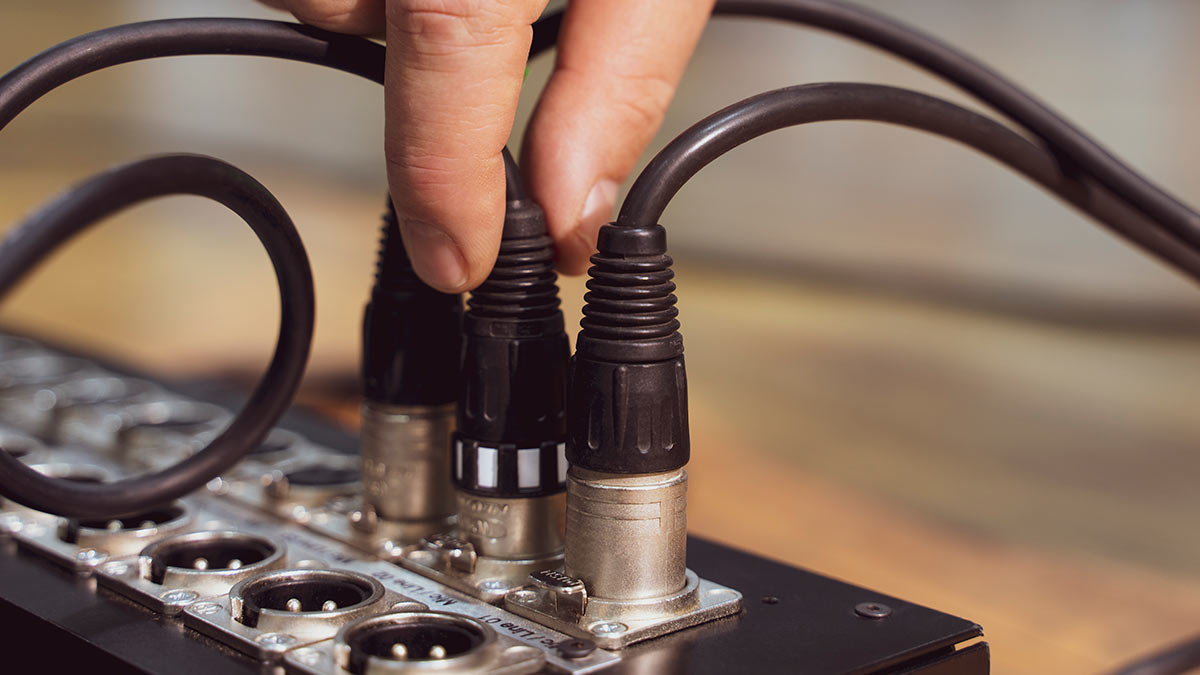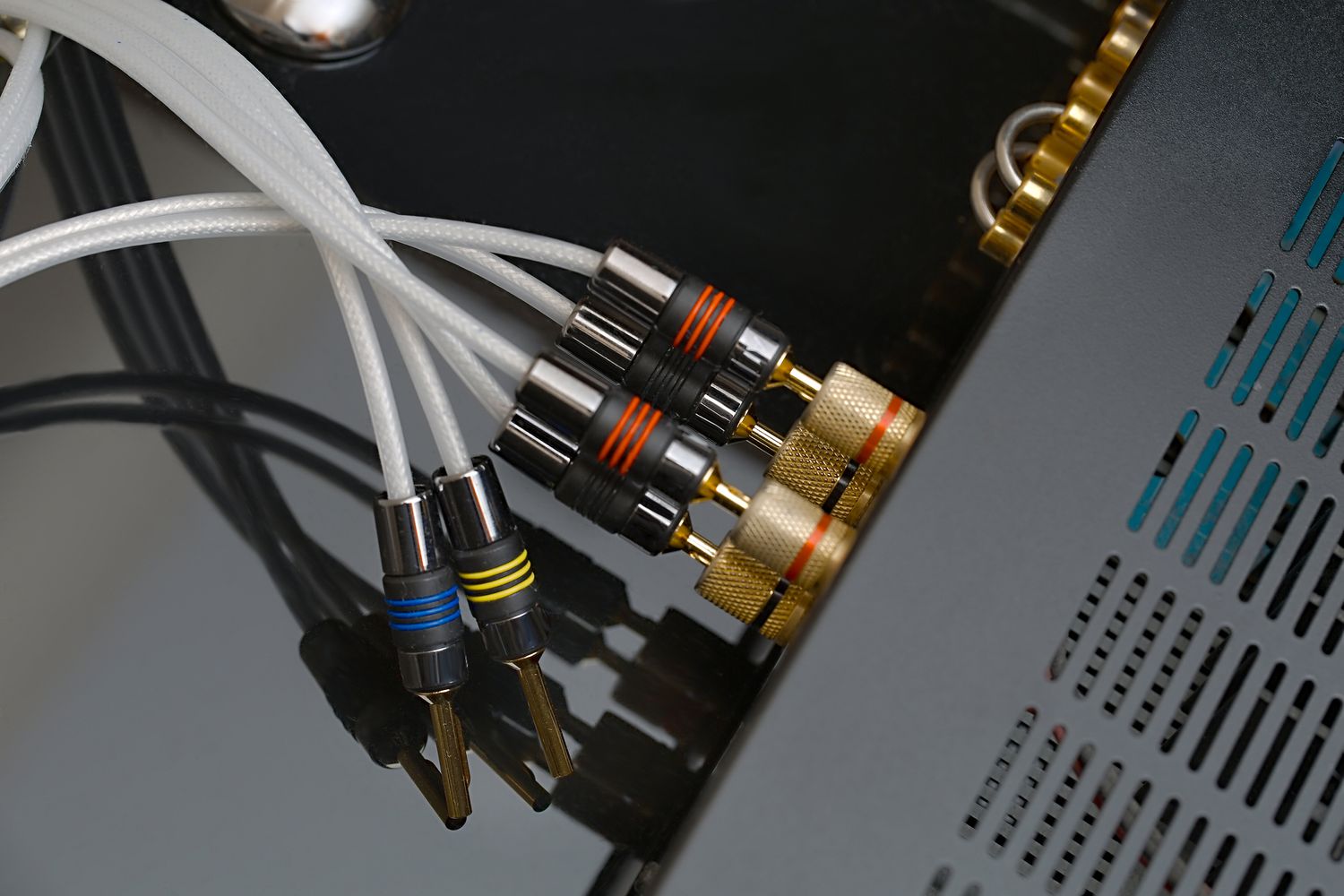Home>Production & Technology>Audio Cable>How To Set Virtual Audio Cable


Audio Cable
How To Set Virtual Audio Cable
Modified: January 22, 2024
Learn how to set up and use Virtual Audio Cable, a powerful tool for routing audio between applications, with this comprehensive guide. Boost your audio capabilities with ease.
(Many of the links in this article redirect to a specific reviewed product. Your purchase of these products through affiliate links helps to generate commission for AudioLover.com, at no extra cost. Learn more)
Table of Contents
Introduction
Audio cables play a crucial role in connecting audio devices, ensuring high-quality sound transmission. However, sometimes the need arises to route audio signals between applications on your computer, providing a virtual connection without the need for physical cables. This is where Virtual Audio Cable comes into play.
Virtual Audio Cable is a software application that allows you to create virtual audio devices and route audio signals between them. Whether you’re a professional audio engineer, a gamer looking to stream your gameplay with immersive sound, or simply someone who wants to explore audio processing capabilities, Virtual Audio Cable is a valuable tool to have in your arsenal.
With Virtual Audio Cable, you can seamlessly transfer audio between applications, allowing for audio processing, mixing, and recording without the limitations of physical connections. From redirecting audio output from one application to another to capturing audio streams for broadcasting or recording, the possibilities are endless.
In this article, we will guide you through the process of setting up Virtual Audio Cable, so you can enjoy the benefits of virtual audio routing. Whether you’re a beginner or have some experience with audio software, this step-by-step guide will help you get started in no time.
Before we dive into the setup process, let’s take a closer look at what exactly Virtual Audio Cable is and how it works.
What is Virtual Audio Cable?
Virtual Audio Cable, developed by Eugene Muzychenko, is a software application that allows you to create virtual audio devices and transfer audio signals between them. It acts as a bridge or virtual cable connecting the audio output of one application to the input of another. This enables you to route audio streams in real-time, opening up a world of possibilities for audio processing, recording, and streaming.
Think of Virtual Audio Cable as a digital equivalent of a physical audio cable. Instead of physically connecting audio devices with cables, Virtual Audio Cable creates virtual audio devices within your computer. These devices function just like physical ones, allowing you to direct audio signals as if they were being connected by actual wires.
Virtual Audio Cable operates at the driver level, acting as a virtual sound card that interacts with the audio devices and applications on your system. It creates a set of virtual audio devices, namely virtual cables, which are used to transmit audio between different applications or processes.
Each virtual cable created by Virtual Audio Cable consists of a pair of audio endpoints: an input endpoint and an output endpoint. These endpoints are like the ends of a physical cable, allowing audio to flow from one application or device to another.
By utilizing Virtual Audio Cable, you can achieve versatile audio routing scenarios. You can redirect audio from one application to another, mix audio streams from multiple sources, capture audio for broadcasting or recording purposes, and even apply real-time audio effects or processing.
Virtual Audio Cable is widely used in various fields, including recording studios, live streaming, gaming, VoIP applications, and more. It offers an efficient and flexible solution for managing audio flows and integrating audio applications in a virtual environment.
Now that we have a better understanding of what Virtual Audio Cable is, let’s proceed with setting it up on your computer.
Setting up Virtual Audio Cable
Setting up Virtual Audio Cable on your computer is a straightforward process. Follow the steps below to get started with virtual audio routing:
- Step 1: Download and Install Virtual Audio Cable
- Step 2: Configuring Virtual Audio Cable
- Step 3: Setting Output and Input
- Step 4: Testing Virtual Audio Cable
The first step is to download the Virtual Audio Cable software from the official website or a trusted source. Once you have downloaded the installer, run it to begin the installation process. Follow the prompts on the screen to complete the installation.
After the installation is complete, launch the Virtual Audio Cable control panel. Here, you will find different options and settings to configure the virtual audio devices.
Virtual Audio Cable works by creating virtual audio cables with input and output endpoints. You need to set up the desired audio output and input devices for each of these virtual cables. This allows you to route audio from one application (output) to another application (input).
Once you have configured the virtual audio cables, it’s important to test them to ensure they are functioning correctly. Play some audio in your preferred media player and route it from the output of one application to the input of another using Virtual Audio Cable. Verify that the audio is being transferred as expected.
These steps give you a basic understanding of how to set up Virtual Audio Cable. However, it’s important to note that the specific configuration settings may vary depending on your operating system and audio devices.
Virtual Audio Cable provides a user-friendly interface to manage virtual audio routing, allowing you to easily customize and optimize the audio flow between applications. Whether you’re a content creator, a musician, or an audio enthusiast, Virtual Audio Cable offers a versatile solution for your audio needs.
Now that you have successfully set up Virtual Audio Cable, you can explore the various applications and possibilities it offers, such as live streaming with enhanced audio, creating complex audio setups for gaming, or integrating multiple audio processing software for professional audio production.
Should you encounter any issues during the setup process, troubleshoot and refer to the Virtual Audio Cable documentation or community forums for assistance.
With Virtual Audio Cable, you have the power to unlock a new level of audio flexibility and creativity on your computer. Enjoy the benefits of virtual audio routing and discover the endless possibilities it brings to your audio workflow!
Step 1: Download and Install Virtual Audio Cable
The first step in setting up Virtual Audio Cable is to download the software and install it on your computer. Follow the instructions below to get started:
- Visit the official website of Virtual Audio Cable or a trusted source that offers the software for download.
- Look for the download link or button on the website. Ensure that you are downloading the correct version of Virtual Audio Cable that is compatible with your operating system.
- Click on the download link to initiate the download process. The file size of the installer may vary, so be patient while it downloads.
- Once the download is complete, locate the downloaded installer on your computer. It is usually saved in the Downloads folder or the location you specified for file downloads.
- Double-click on the installer file to start the installation process.
- Follow the on-screen prompts and instructions provided by the installation wizard. Review and accept the license agreement, choose the installation location (or leave it as the default), and select any additional components or options you may require.
- Click on the “Install” or “Next” button to begin the installation. The installation process may take a few moments, so wait until it completes.
- Once the installation is finished, you may be prompted to restart your computer. It is recommended to restart your system to ensure that the changes made by the installation process take effect.
After following these steps, you will have successfully downloaded and installed Virtual Audio Cable on your computer. You are now ready to proceed with the configuration and setup of virtual audio devices in the Virtual Audio Cable control panel.
Keep in mind that Virtual Audio Cable is a paid software application, and you may need to purchase a license or activate the software after installing it. Follow the instructions provided by the software to complete the licensing or activation process, if necessary.
Now that you have Virtual Audio Cable installed, let’s move on to the next step – configuring the software to start routing audio between applications.
Step 2: Configuring Virtual Audio Cable
After installing Virtual Audio Cable on your computer, the next step is to configure the software to set up virtual audio devices and manage audio routing between applications. Follow the steps below to get started:
- Launch the Virtual Audio Cable control panel. You can usually find it in the Start menu or by searching for “Virtual Audio Cable” in the Windows search bar.
- In the control panel, you will see the options and settings to configure the virtual audio devices. Take some time to familiarize yourself with the control panel interface.
- Inspect the available virtual cables. Virtual Audio Cable allows you to create multiple virtual audio cables, each with its own set of input and output endpoints. The number of virtual cables available may depend on the license you have purchased.
- Configure the properties of each virtual cable by right-clicking on it and selecting “Properties” or a similar option. Here, you can customize settings such as the number of channels, sample rate, buffer size, and other advanced options. Adjust these settings according to your specific requirements.
- Explore the additional options and features provided by Virtual Audio Cable. Depending on the version of the software, you may have access to options like audio repeater, volume control, and mixer, which allow for more advanced audio routing and processing.
- Take note of any specific configuration requirements for the applications you intend to use with Virtual Audio Cable. Some applications may require specific settings or configurations to properly utilize the virtual audio devices created by Virtual Audio Cable. Refer to the documentation or support resources of the specific applications for guidance.
- Once you have configured the virtual audio cables and adjusted the necessary settings, click the appropriate buttons or options to save your changes and apply the configurations.
By following these steps, you will have successfully configured Virtual Audio Cable to start routing audio between applications. From here, you can proceed to set up the output and input endpoints for each virtual cable, allowing you to direct audio signals between different applications or processes.
Keep in mind that the configuration process may vary depending on the version of Virtual Audio Cable and the specific requirements of your audio setup. Consult the documentation or user guides provided by Virtual Audio Cable for more detailed instructions and troubleshooting tips.
Now that you have configured Virtual Audio Cable, let’s move on to the next step – setting the output and input devices for the virtual cables to start routing audio.
Step 3: Setting Output and Input
Once you have configured Virtual Audio Cable and customized the properties of your virtual audio cables, the next step is to set up the output and input devices for each virtual cable. This will allow you to route audio signals between applications or processes. Follow the steps below to configure the output and input settings:
- Open the Virtual Audio Cable control panel if it’s not already open.
- Locate the virtual audio cable for which you want to set the output and input devices.
- Right-click on the virtual audio cable and select “Properties” or a similar option.
- In the properties window, you will see options to select the output and input devices for the virtual cable.
- Click on the drop-down menus for the output and input devices and select the desired devices from the list. These devices represent the audio sources or destinations that you want to use for the selected virtual audio cable.
- Verify that the selected output and input devices are correct. If necessary, you can change the devices by selecting different options from the drop-down menus.
- Adjust any additional settings or parameters specific to the output and input devices, such as sample rate or buffer size, if required. These settings may vary depending on your specific audio setup and requirements.
- Click on the “Apply” or “OK” button to save the configurations for the virtual audio cable.
- Repeat these steps for each virtual cable you have created, ensuring that you set the output and input devices according to your desired audio routing setup.
By following these steps, you will have successfully set up the output and input devices for each virtual audio cable in Virtual Audio Cable. This configuration allows you to establish audio connections between different applications or processes, enabling the transfer of audio signals in real-time.
Keep in mind that the availability of output and input devices may depend on the devices installed on your computer. Make sure you have the necessary audio devices connected and recognized by your operating system for successful audio routing.
Now that you have set up the output and input devices for your virtual audio cables, you can proceed to the next step – testing Virtual Audio Cable to ensure that the audio is being transferred as expected.
Step 4: Testing Virtual Audio Cable
After configuring the output and input devices for your virtual audio cables in Virtual Audio Cable, it’s important to perform a test to ensure that the audio is being transferred as expected. This will help you verify that the routing between applications is functioning correctly. Follow the steps below to conduct a test:
- Open the applications that you want to route audio between. For example, you may have a media player application that you want to redirect audio from, and another application that you want to capture audio in.
- In the Virtual Audio Cable control panel, locate the virtual cable that you configured to route audio between these applications.
- Check that the output device of the source application (where the audio is originating) is set to the virtual audio cable you are using.
- Verify that the input device of the target application (where the audio will be received) is also set to the same virtual audio cable.
- Play some audio in the source application, such as a music track or a video with sound.
- Monitor the target application to confirm that it is receiving the audio from the source application via the virtual audio cable. You should be able to hear the audio playing through the target application.
- Observe the audio levels or meters in both the source and target applications to ensure that the audio signal is being transferred successfully.
- If the audio is not being transferred as expected, double-check the output and input device settings for the virtual audio cable and adjust them if necessary. Additionally, ensure that the volume levels are correctly set in both applications.
- Repeat this test for each virtual audio cable and routing scenario you have set up in Virtual Audio Cable.
By performing this test, you can confirm that Virtual Audio Cable is working properly and that audio is being routed between the desired applications. If you encounter any issues during the testing process, refer to the Virtual Audio Cable documentation, user guides, or online support resources for troubleshooting assistance.
Once you have successfully tested Virtual Audio Cable and verified that the audio is being transferred correctly, you can continue exploring the various uses and applications of the software. Whether you’re streaming audio, recording podcasts, or enhancing your gaming experience, Virtual Audio Cable provides an efficient and versatile solution for managing audio routing on your computer.
Congratulations! You have now completed the essential steps to set up and test Virtual Audio Cable. Enjoy the benefits of virtual audio routing and unleash your creativity with seamless audio connections between applications!
Troubleshooting Virtual Audio Cable Issues
While Virtual Audio Cable is a powerful tool for audio routing, you may encounter some issues during the setup or usage. Here are some common troubleshooting steps to help resolve any problems you may encounter:
- Ensure Virtual Audio Cable is correctly installed: Double-check that you have installed Virtual Audio Cable correctly and that it is running the latest version. Reinstalling the software may help resolve any potential installation-related issues.
- Check virtual cable settings: Verify that the virtual audio cables’ settings, such as sample rate, buffer size, and channel configuration, are appropriate for your audio setup. Incorrect settings can lead to audio distortion or loss.
- Verify output and input device settings: Make sure that you have selected the correct output and input devices for each virtual audio cable. Incorrect device assignments can result in audio not being routed properly.
- Check system audio settings: Ensure that your computer’s system audio settings are correctly configured. Make sure that the audio devices you intend to use with Virtual Audio Cable are recognized and set as the default devices for playback and recording.
- Restart applications: If you’re experiencing issues with audio routing between specific applications, try restarting those applications. Sometimes, restarting the applications can resolve temporary conflicts or glitches.
- Update audio drivers: Outdated or incompatible audio drivers can cause issues with Virtual Audio Cable. Check for driver updates from the manufacturers of your audio devices and install the latest versions.
- Check hardware compatibility: Verify that your audio hardware is compatible with Virtual Audio Cable. In some cases, older or unsupported audio devices may not work correctly with the software.
- Disable other audio-related software: Conflicting audio software or drivers from other applications may interfere with Virtual Audio Cable’s functionality. Temporarily disable or uninstall any unnecessary audio-related software to see if it resolves the issue.
- Consult the documentation and support resources: Refer to the Virtual Audio Cable documentation, user guides, and online support resources for specific troubleshooting guidance. The developer’s website and user forums are excellent resources for finding solutions to common issues and connecting with the community for assistance.
If you have followed these troubleshooting steps and are still experiencing issues with Virtual Audio Cable, consider reaching out to the software’s technical support team for further assistance. Provide them with as much information as possible, including details about your operating system, audio devices, and the specific problem you’re encountering.
Remember that Virtual Audio Cable offers a wide range of features, so it’s essential to understand how to utilize its capabilities effectively. Take the time to explore the software’s documentation and user guides to optimize your experience and achieve the desired audio routing goals.
By engaging in troubleshooting and utilizing the available resources, you can overcome obstacles and enjoy the benefits of seamless audio routing with Virtual Audio Cable.
Conclusion
Virtual Audio Cable is a powerful software application that opens up a world of possibilities for audio enthusiasts, professionals, and gamers. By creating virtual audio devices and routing audio signals between applications, it provides a flexible solution for audio processing, recording, and streaming.
In this article, we covered the steps to set up Virtual Audio Cable on your computer. We began by introducing the concept of virtual audio routing and explored the features and capabilities of Virtual Audio Cable. Then, we walked through the process of downloading and installing the software. We also discussed the configuration of virtual audio cables, including setting output and input devices for efficient audio routing.
Furthermore, we covered the importance of testing Virtual Audio Cable to ensure that audio signals are being transferred correctly between applications. By conducting a thorough test, you can identify and resolve any issues that may arise during the setup process.
Additionally, we provided troubleshooting tips to help you overcome common issues that may occur while using Virtual Audio Cable. By following these troubleshooting steps and utilizing the available resources, you can resolve any potential obstacles and fully utilize the capabilities of the software.
In conclusion, Virtual Audio Cable is an invaluable tool for anyone looking to optimize their audio workflow. Whether you’re a content creator, musician, or gaming enthusiast, Virtual Audio Cable allows you to explore new possibilities and enhance the audio experience on your computer.
Now that you have a solid understanding of how to set up and use Virtual Audio Cable, it’s time to start exploring its full potential. Experiment with different audio routing scenarios, leverage its features for recording, streaming, and professional audio production, and unlock a new level of creativity and flexibility in your audio projects.
Enjoy the benefits of Virtual Audio Cable and have fun exploring the world of virtual audio routing!











